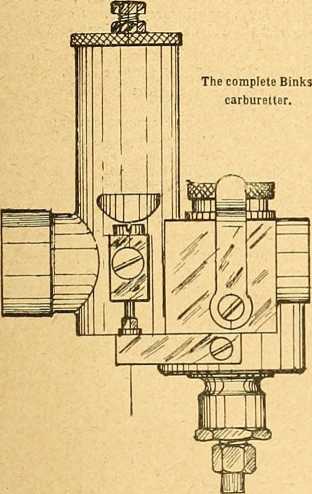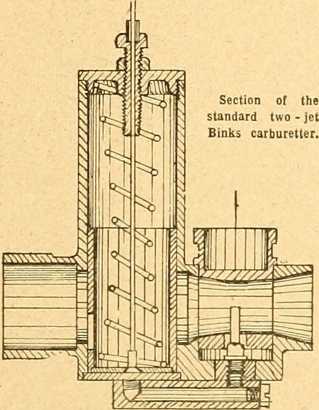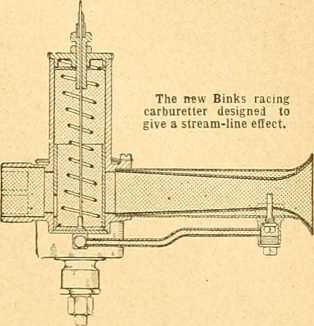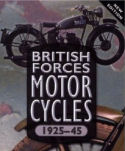
swiftly
through the air the shape of the back part has a greater effect on
its progress than the shape of the front, and the same naturally
applies to the ease of air or gas passing through apertures, and
if a carburetter can be designed in which the choke tube gradually
expands beyond the jet at the proper angle, the gas will pass
through with less resistance than if there are corners, etc.,
which set up eddies. It will be noted that these carburetters
fulfil this condition when working at full throttle. The second
point is the fitting

of a pilot jet for slow strong pulling and starting purposes. A slight movement of the lever opens the pilot jet. and a larger opening brings the main jet into play. The choke tube in the roadster pattern can be slightly turned round to cut off part of the air supply, but except for this the carburetter is automatic, there being no separate air control.
In the racing
pattern the jet is situated a long way in rear of the float
chamber; this has the effect of raising the petrol level in the
jet when going up hill. The jets, six of which are supplied with
each carburetter, can be changed without

dismantling the parts. The accessibility of the parts is a big point in favour of the Binks; for instance, the top of the float chamber is held in place by a spring clip, and is therefore very quickly and easily detached.




